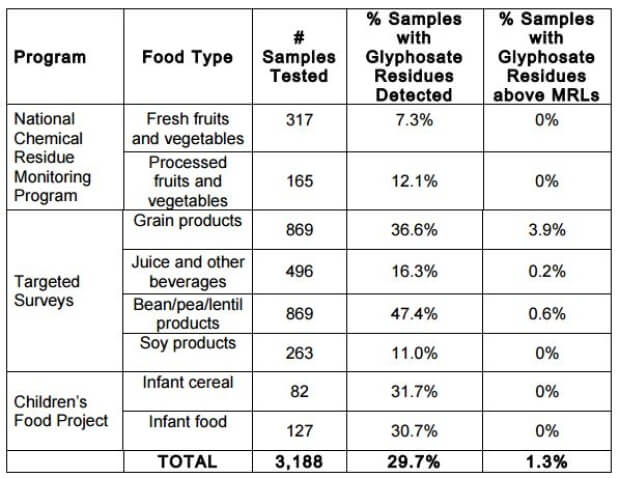Canada’s food regulator has found traces of the controversial herbicide glyphosate in nearly 30 percent of about 3,200 food products it tested, and residue levels above the acceptable limits in 1.3 percent of the samples.
The Canadian Food Inspection Agency’s report on testing of glyphosate is titled “Safeguarding with Science: Glyphosate Testing in 2015-2016, and was published on its website this week. Glyphosate is used to kill weeds, but can also be used to dry grains and legumes before they’re harvested.
Government and scientific agencies in Canada, the U.S. and Europe consider glyphosate safe for humans at certain levels, but scientists and environmentalists around the world are skeptical, with numerous research studies connecting it to cancer concerns.
The CFIA tested 3,188 domestic and imported food products for glyphosate residues and compared the results to Health Canada’s Maximum Residue Limits (MRLs) — the level at which they aren’t a concern for human health.

The GLP aggregated and excerpted this blog/article to reflect the diversity of news, opinion, and analysis. Read full, original post: Nearly a third of food samples in CFIA testing contain glyphosate residues
For more background on the Genetic Literacy Project, read GLP on Wikipedia































